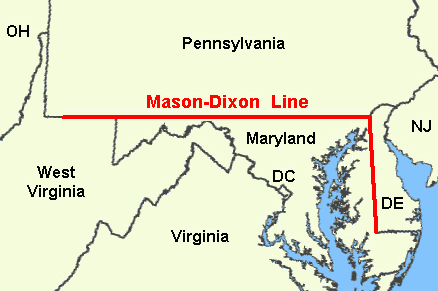Maryland is a border state. It is a state with historically interesting borders, including the famous Mason-Dixon Line, that create its unique shape. It is also a regional border, caught between the North and South, with the Mason-Dixon line symbolically representing that larger national schism. Maryland was a political and literal battleground a number of times over the years, but it is worth noting and proudly retelling how it is also the home to great strides in unity.

Maryland served as a battleground before it was a state. Fort Frederick was built for the French and Indian War, the same war where George Washington served under the British General Braddock. Maryland also supported the Revolutionary War with her “Old Line” troops, and saw armies marching through her lands, though it was actually spared significant action at home. Only a few years later, however, the War of 1812 brought that action as the British burned Washington D.C. and sieged Baltimore City.

During the War of 1812, the British fleet bombarded Fort McHenry, which guarded the approach to Baltimore from the Chesapeake Bay. American Francis Scott Key, who was detained aboard a British ship while negotiating a prisoner exchange, witnessed this battle and in the dawn’s early light wrote his poem "Defence of Fort M’Henry.” The poem was later published and put to music. We now know it better as the “Star Spangle Banner” which officially became the U.S. National Anthem in 1931 after decades of informal use as such.
From the earliest days of the colonies, the 40th latitude was acknowledged as the southern border of New England and was therefore the planned border between Pennsylvania and Maryland. (It is also the border between Kansas and Nebraska.) As a result of a negotiated agreement between William Penn and Lord Baltimore, the border was moved 19 miles south and established as the Mason-Dixon Line in 1767. In the subsequent century, however, as the constitutionally-deferred issued of slavery built to a head in the Civil War, Maryland and the Mason-Dixon line became the border between the Northern and Southern causes.
Mason Dixon Line (US Dept of Interior) & Maryland Campaign 1862 (American Battlefield Trust, June 2020)
Maryland was home to the bloodiest day in U.S. history which took place during the Civil War at the Battle of Antietam where 22,217 soldiers died in all. As a border state, her citizens fought on both the Union and Confederate sides of this terrible war. The agrarian and rural areas leaned South while the industrial and urban areas leaned North. Both armies transited Maryland on the way to and from Gettysburg (which also would have been in Maryland under the original language of the land-granting charter). It is safe to say it was a state divided.

The tone in Maryland after the Civil War turned toward reconciliation in a visible way. During the war, each side utilized a portion of Maryland heraldry as a symbol. Pro-Union Marylanders waved the yellow and black Calvert Family (Lord Baltimore) coat of arms. In contrast, Confederate Marylanders used the red and white Crossland Family (Lord Baltimore’s mother) coat of arms. Starting in 1880, at celebrations in Baltimore and Gettysburg, the two flags were seen combined into today’s beautiful state flag as a symbol of unity. Maryland’s bold flag often tops vexillologist lists of best looking flags, but the story of its history and meaning are equally praiseworthy.
Maryland is the home of many battlefields, bases, and forts that witnessed and served generations of war. It is also the home of the Mason-Dixon Line which symbolizes a century of deep national division. But flying over every battlefield and fort, and making every surveyed milestone are remarkable flags that embrace unity and thrive in peace. Whether it is the enormous U.S. flag flying over Fort McHenry inspiring national pride, or the beautiful Maryland flag symbolizing reunification, the stories behind these banners is a bright spot in the Old Line State’s deep history. ~




Comments